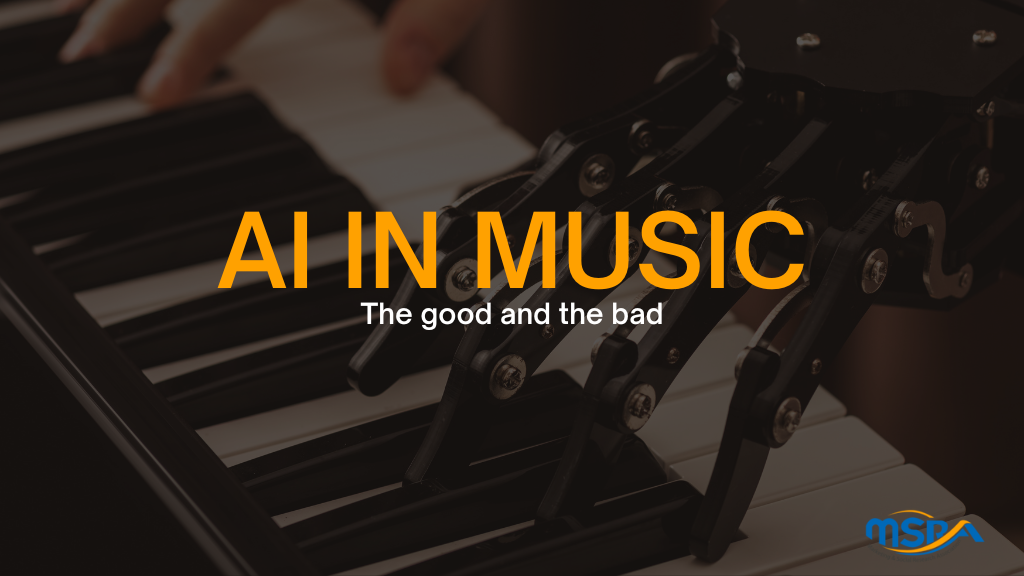Marketing & Social Research Association – MSRA
AI in Music
The integration of Artificial Intelligence (AI) into the music industry has sparked a lively debate, highlighting both the innovative potential and the challenges that come with this technological advancement. Let’s explore the good and the bad sides of AI in music.

The Good
1. Enhanced Creativity and Collaboration
AI tools like OpenAI’s MuseNet and Google’s Magenta have demonstrated the ability to compose music in various styles, from classical to contemporary. These tools serve as creative partners for musicians, offering fresh ideas and helping overcome writer’s block. By analyzing vast datasets of existing music, AI can generate unique compositions, blending genres and styles in ways that might not occur to human composers.
2. Accessibility and Democratization
AI has made music creation more accessible to non-musicians. Tools like Amper Music and AIVA (Artificial Intelligence Virtual Artist) allow anyone to compose music without extensive knowledge of music theory or performance skills. This democratization empowers a wider range of people to express themselves musically, potentially leading to a more diverse array of musical works.
3. Personalized Listening Experiences
Streaming platforms like Spotify and Apple Music use AI algorithms to personalize recommendations, creating tailored playlists based on user preferences. This enhances the listening experience, helping users discover new music that aligns with their tastes. AI-driven curation ensures a continuous, engaging musical journey for listeners.
The Bad
1. Creativity Concerns
While AI can generate music, it raises questions about the nature of creativity. Critics argue that AI lacks the emotional depth and personal experience that human musicians bring to their work. AI compositions might be technically impressive but could lack the soul and authenticity that resonate with listeners on a deeper level.
2. Job Displacement
The rise of AI in music production has led to concerns about job displacement for musicians, composers, and producers. As AI tools become more sophisticated, there’s a fear that they could replace human roles in music creation and production, potentially reducing opportunities for artists to make a living from their craft.
3. Ethical and Copyright Issues
AI-generated music raises complex ethical and legal questions. Who owns the rights to music created by AI? How do we ensure fair compensation for human artists whose work might be used to train these AI systems? The lack of clear regulations and frameworks for AI-generated content could lead to disputes and exploitation.
Conclusion
AI in music is a double-edged sword. On one hand, it opens up new realms of creativity, making music more accessible and personalized. On the other, it challenges our notions of creativity, threatens job security in the industry, and presents ethical dilemmas. As AI continues to evolve, finding a balance that harnesses its benefits while addressing its drawbacks will be crucial for the harmonious future of music.
In conclusion, while AI presents exciting opportunities for innovation and creativity in various industry, it also brings significant challenges that must be addressed. As AI continues to evolve, the collaboration between technologists, musicians, and researchers will be crucial in shaping a future where AI enriches rather than diminishes the art of music.
